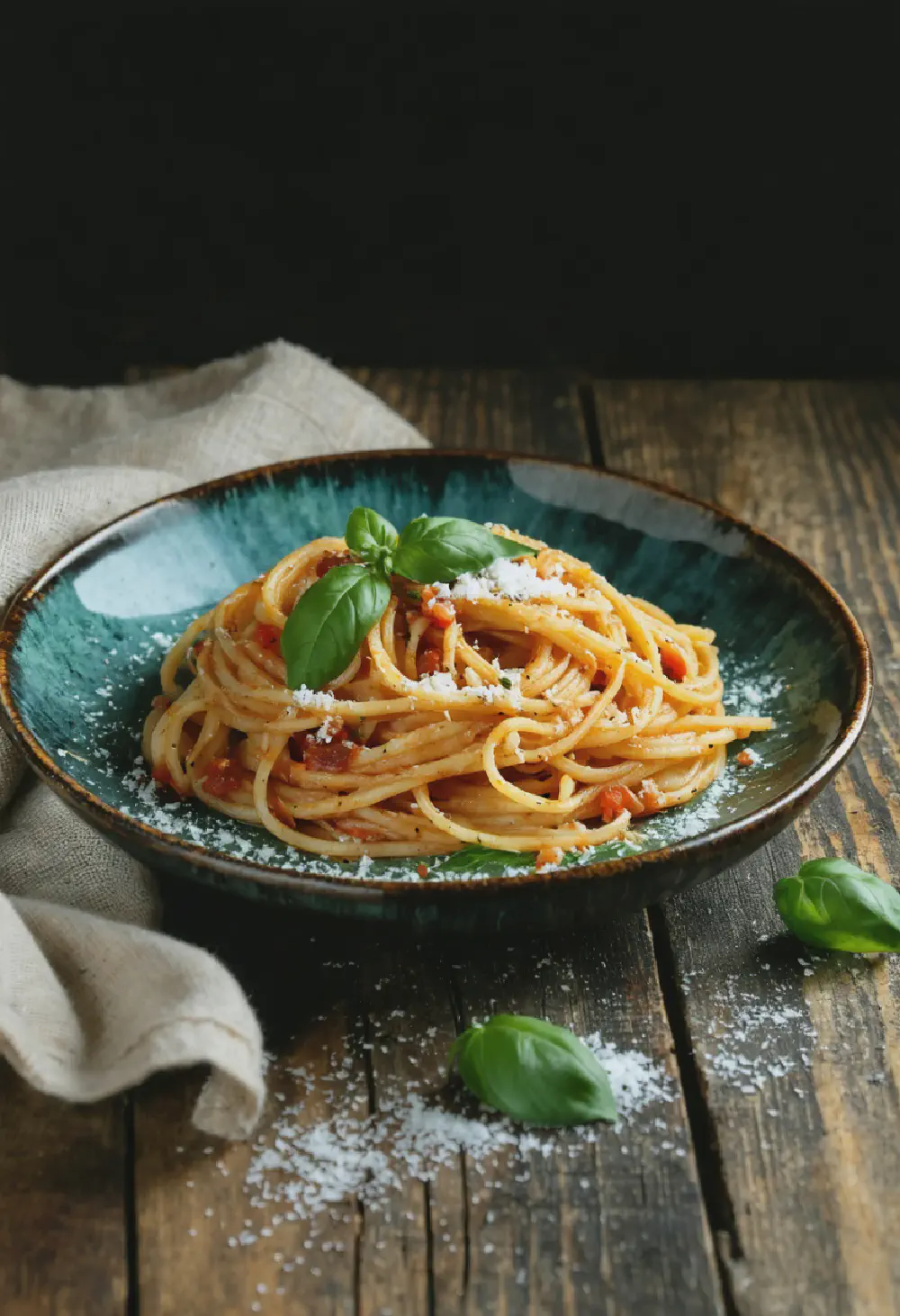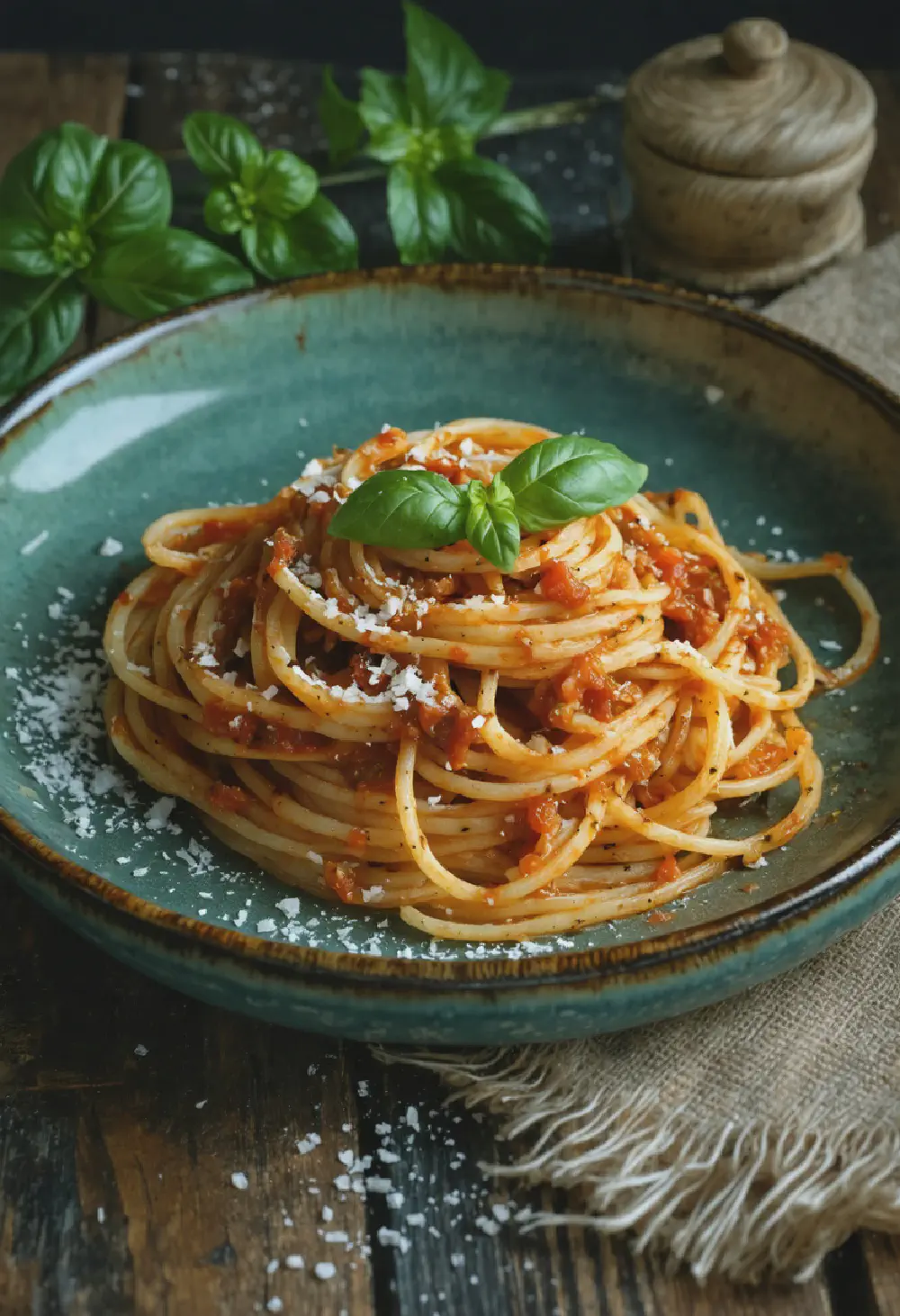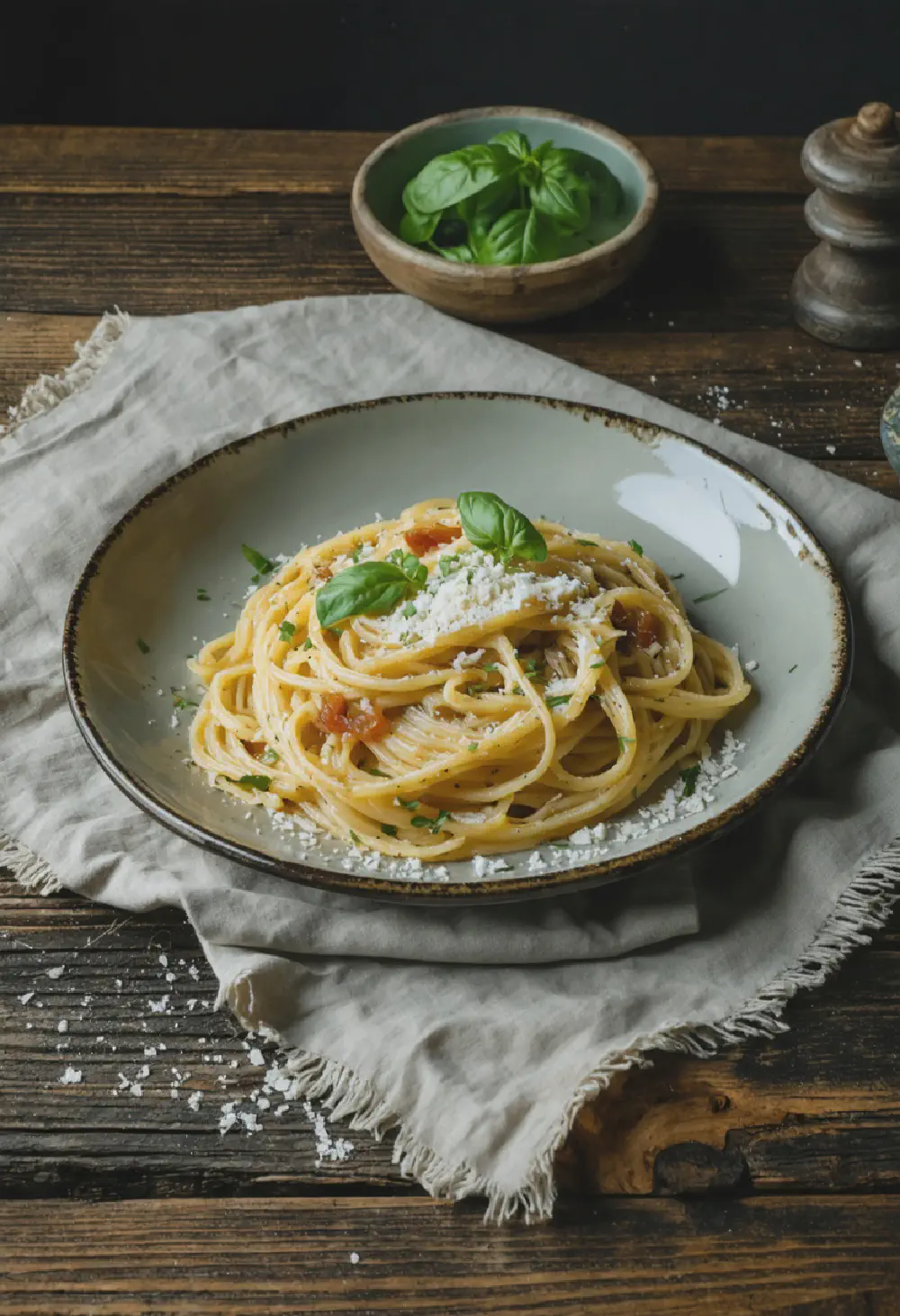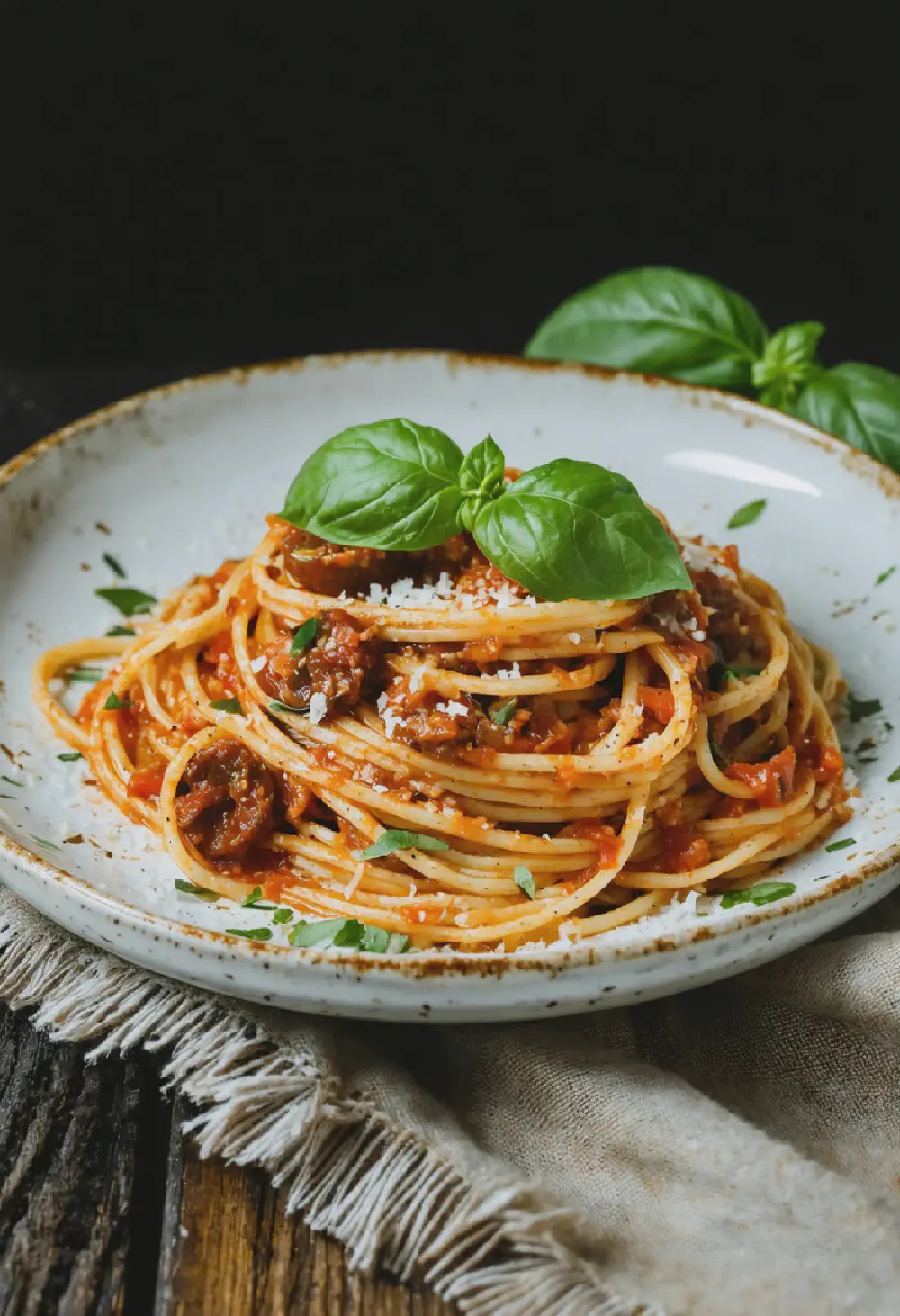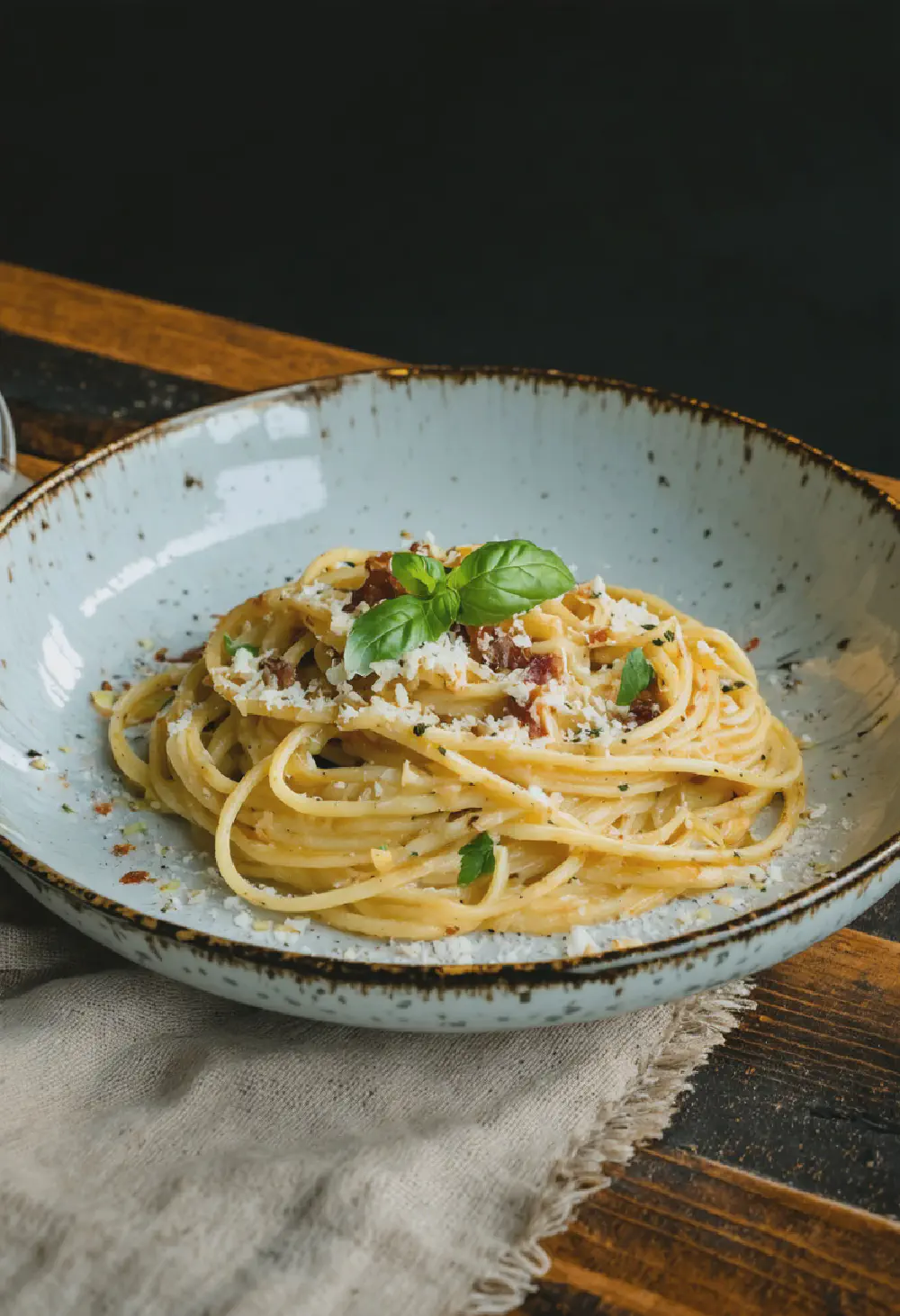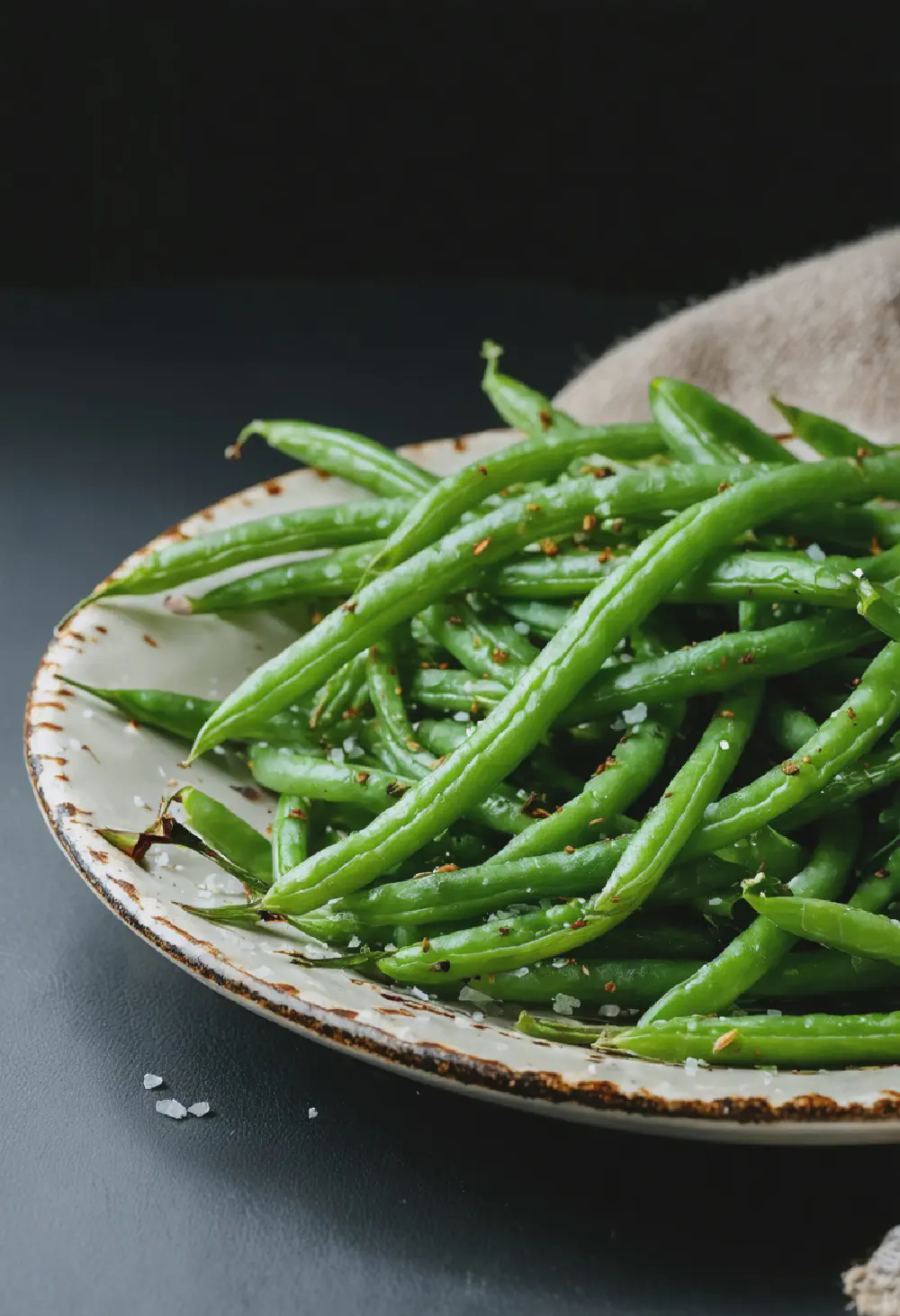Spaghetti alla Nerano
20M
50M
- Makes 4 servings
- 400g spaghetti
- 6 medium zucchinis
- 100g provolone cheese, grated
- 50g Parmesan cheese, grated
- 4 tablespoons extra virgin olive oil
- 2 cloves garlic, thinly sliced
- A handful of fresh basil leaves
- Salt and freshly ground black pepper to taste
- Start by washing the zucchinis and slicing them into thin rounds. Heat 2 tablespoons of olive oil in a large frying pan over medium heat. Add the zucchini slices and fry until they are golden brown on both sides. This should take about 10 minutes. Remove the zucchini from the pan and set aside.
- In the same pan, add the remaining 2 tablespoons of olive oil and the sliced garlic. Sauté the garlic until it becomes fragrant but not browned, about 1-2 minutes.
- Meanwhile, bring a large pot of salted water to a boil. Cook the spaghetti according to the package instructions until al dente. Drain the pasta, reserving a cup of the pasta water.
- Add the cooked spaghetti to the pan with the garlic and olive oil. Toss to coat the pasta well. Add the fried zucchini slices and half of the basil leaves, torn into pieces.
- Reduce the heat to low and stir in the grated provolone cheese. If the sauce is too thick, add some of the reserved pasta water to achieve the desired consistency. Season with salt and freshly ground black pepper to taste.
- Serve the spaghetti immediately, garnished with the remaining basil leaves and a sprinkle of grated Parmesan cheese.
Spaghetti alla Nerano: A Dive into Its Rich History, Taste, and Cultural Significance
History
Spaghetti alla Nerano, a gem of Italian cuisine, traces its roots back to the picturesque Amalfi Coast, specifically to the small village of Nerano. This dish, which has become a symbol of the region’s culinary heritage, was first created in the mid-20th century at the renowned restaurant, Maria Grazia. Legend has it that the dish was born out of a happy accident when the chef, experimenting with local ingredients, combined zucchini, basil, and provolone cheese with spaghetti. The result was an instant hit, and Spaghetti alla Nerano quickly became a beloved dish not only in Nerano but across Italy and beyond. Its simple yet exquisite preparation has made it a favorite among food enthusiasts seeking to experience authentic Italian flavors.
Taste Profile
The taste profile of Spaghetti alla Nerano is a harmonious blend of delicate and robust flavors. At its core, the dish features zucchini, which is sautéed to a golden perfection, lending a subtle sweetness and a tender texture to the pasta. The addition of fresh basil infuses the dish with a fragrant, herbaceous note that complements the zucchini beautifully. The crowning glory of Spaghetti alla Nerano is the provolone cheese, which melts into the pasta, creating a creamy, slightly tangy sauce that coats each strand of spaghetti. This combination of ingredients results in a dish that is both comforting and sophisticated, with a balance of flavors that is quintessentially Italian.
Cultural Significance
Within the broader context of Italian cuisine, Spaghetti alla Nerano holds a special place due to its cultural significance. It embodies the essence of the Amalfi Coast’s culinary tradition, which emphasizes the use of fresh, local ingredients to create dishes that are both simple and flavorful. The dish is a testament to the Italian philosophy of “cucina povera,” or “poor kitchen,” which celebrates the art of making the most out of humble ingredients. Spaghetti alla Nerano is often served at family gatherings and festive occasions, symbolizing the warmth and hospitality that are hallmarks of Italian culture. Its popularity has also made it a staple on the menus of many Italian restaurants worldwide, helping to spread the rich culinary heritage of the Amalfi Coast to a global audience.
